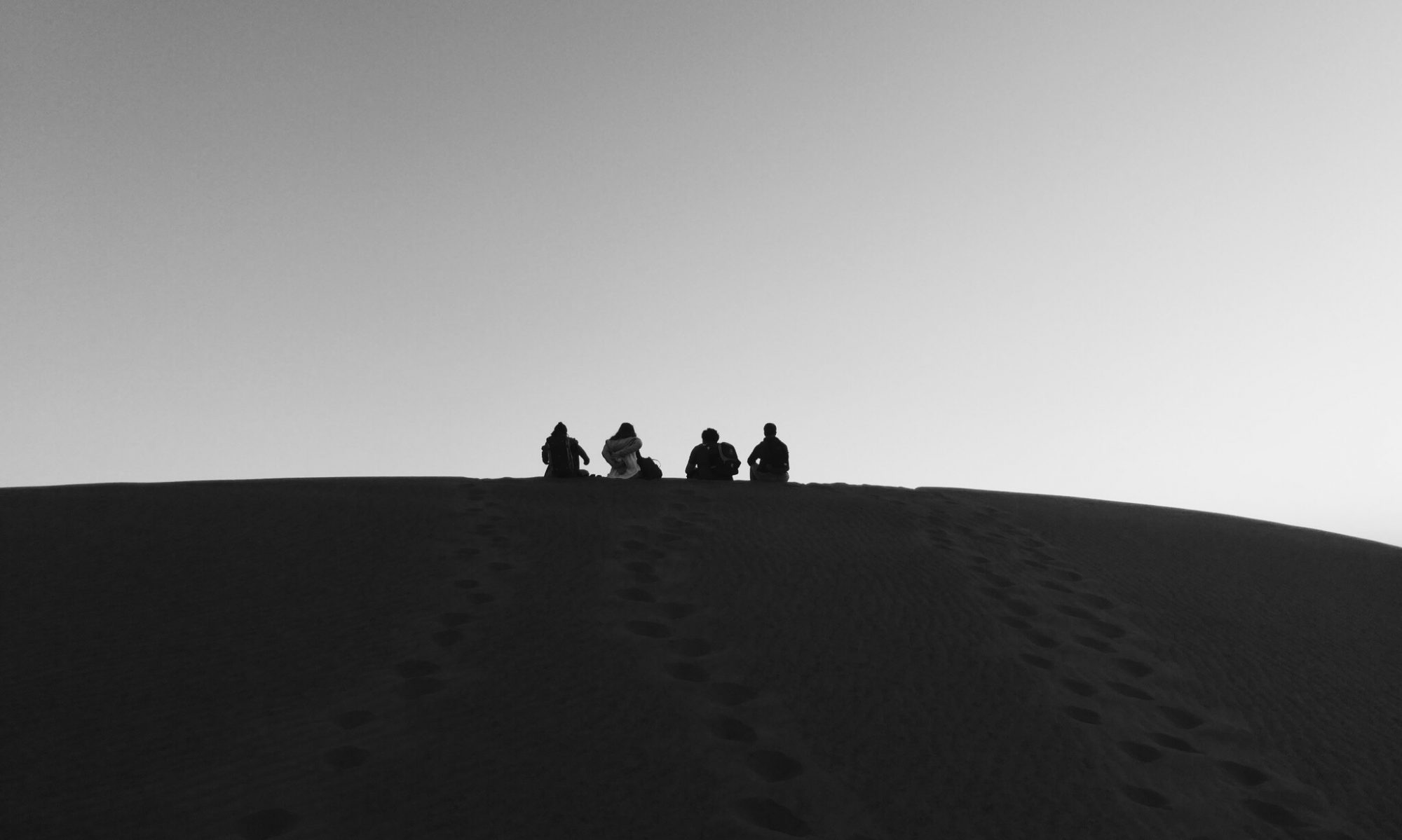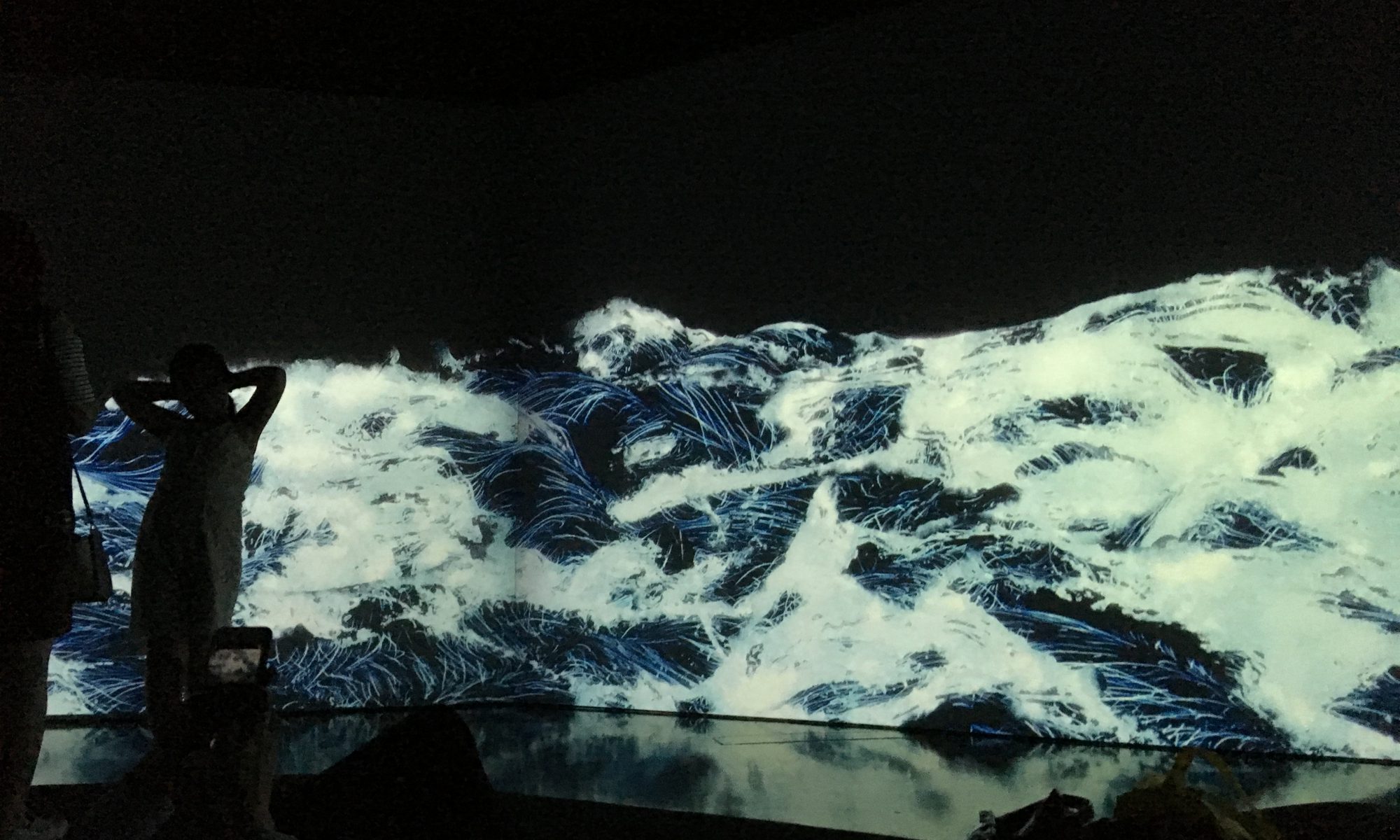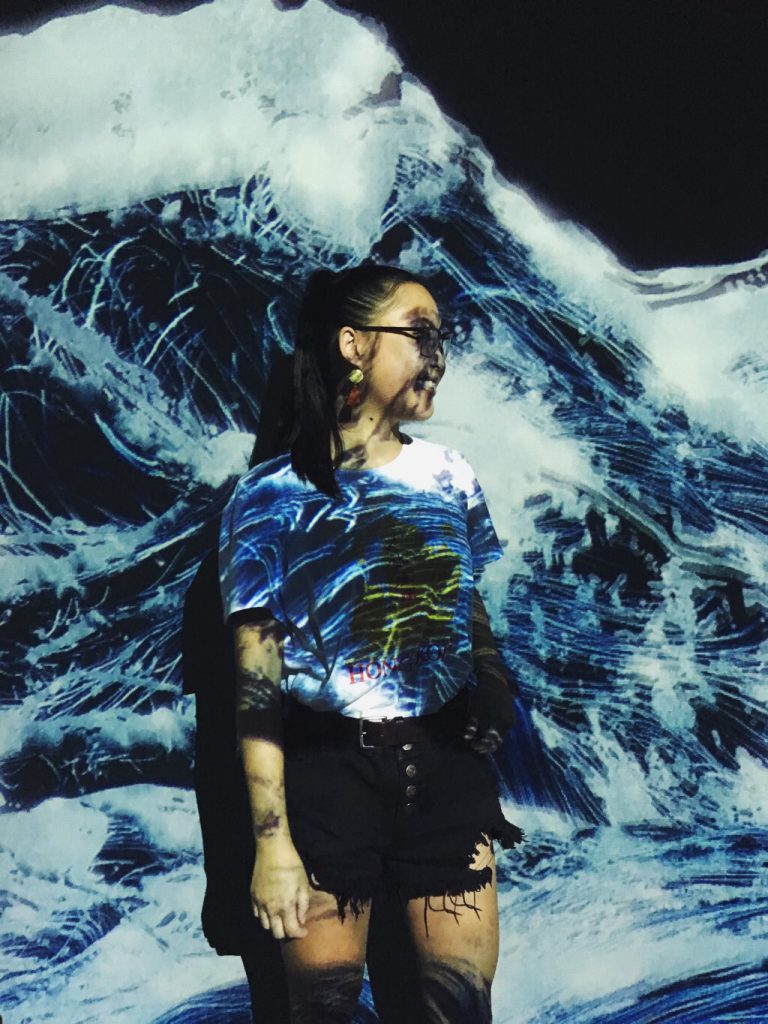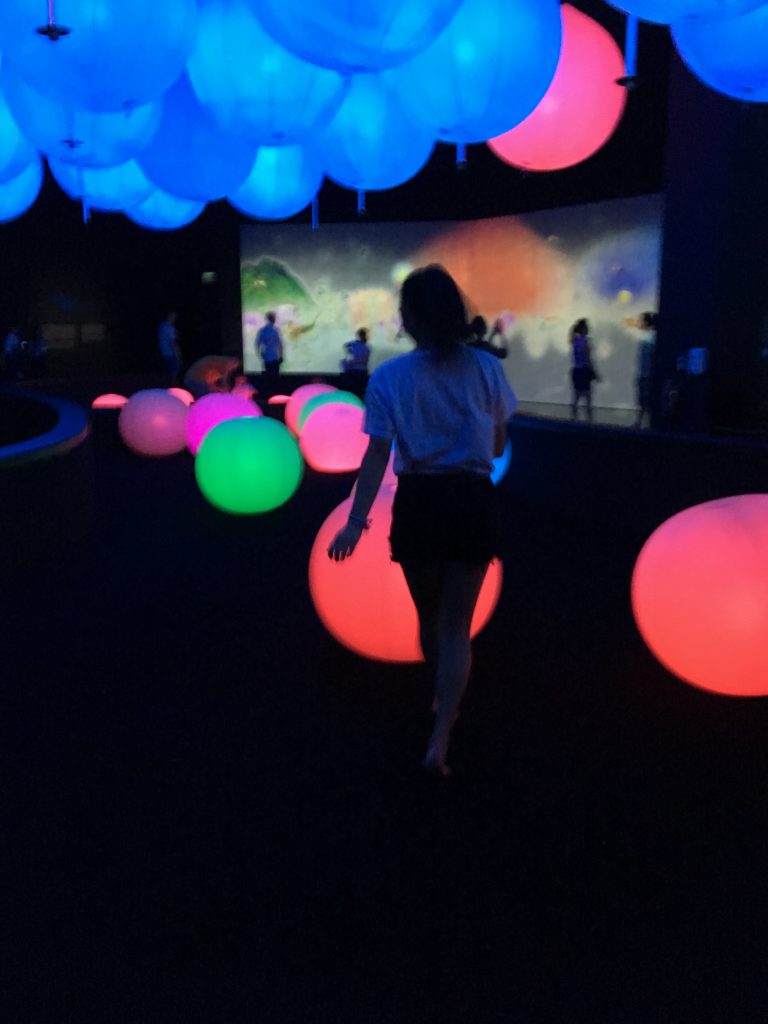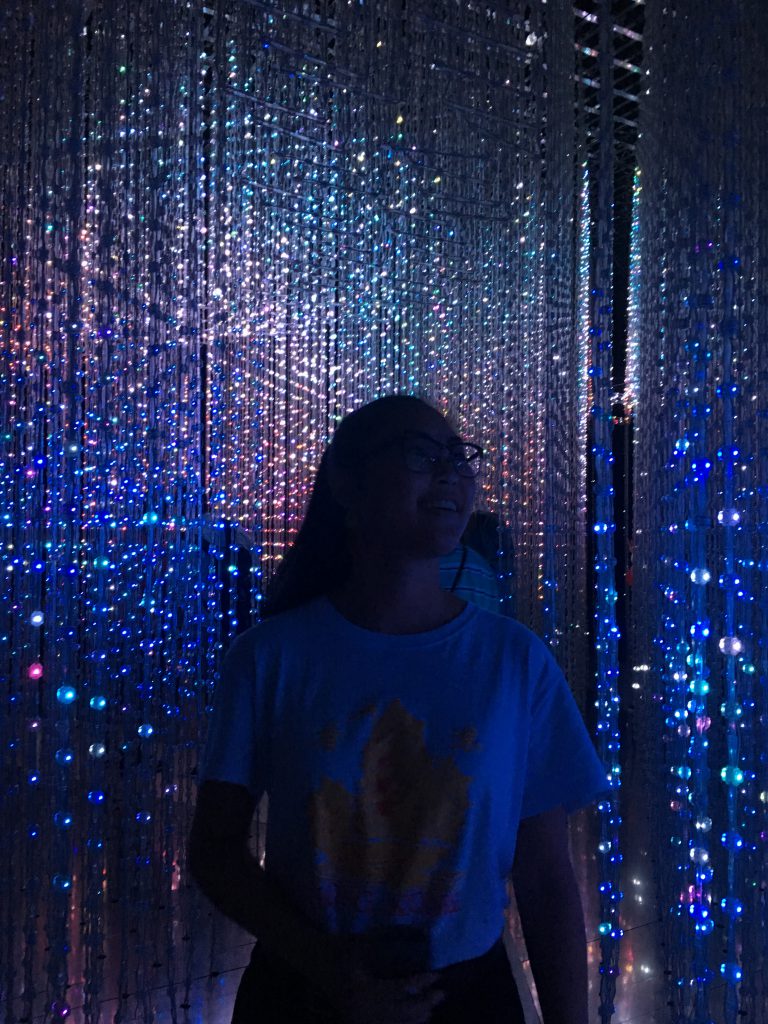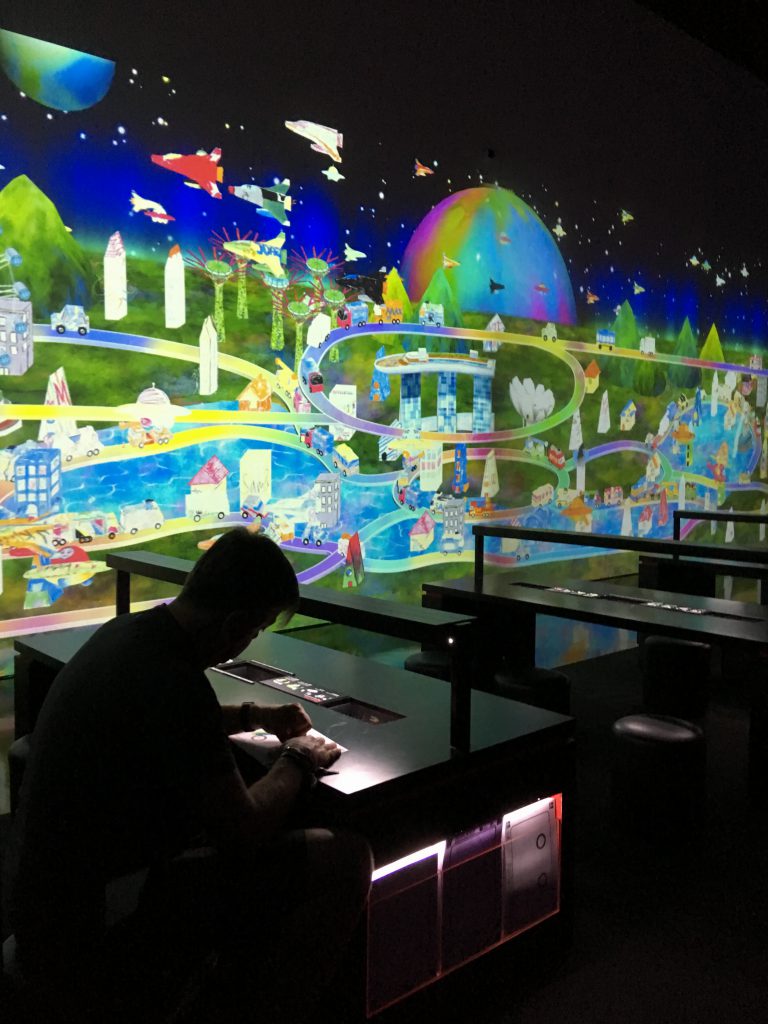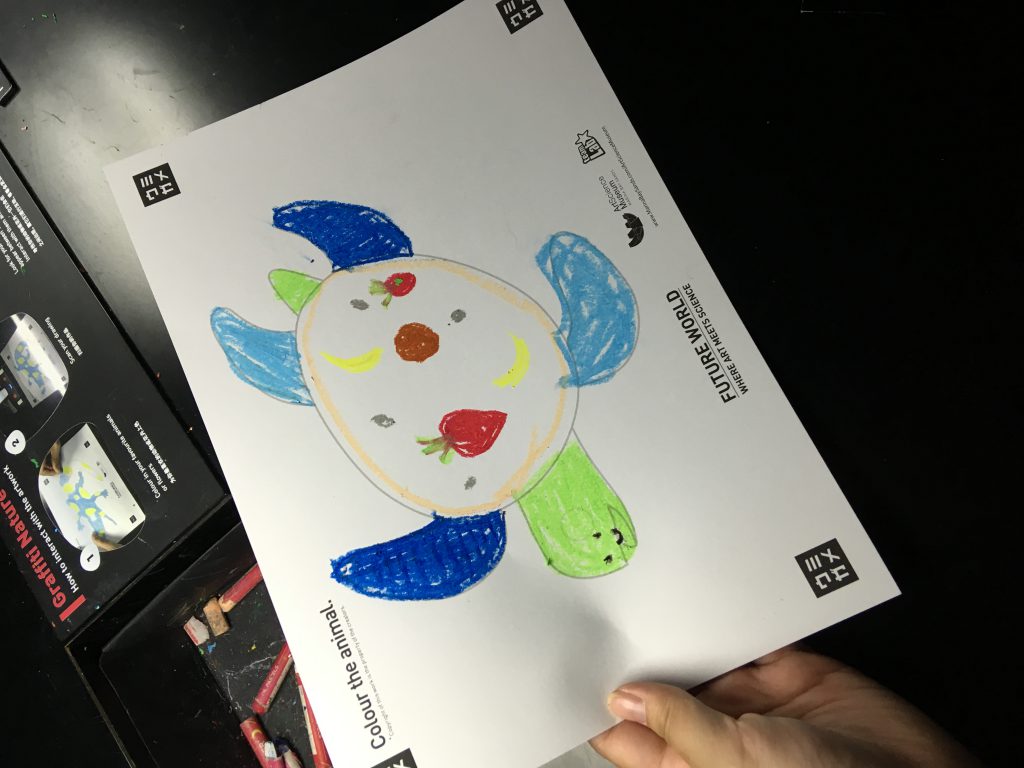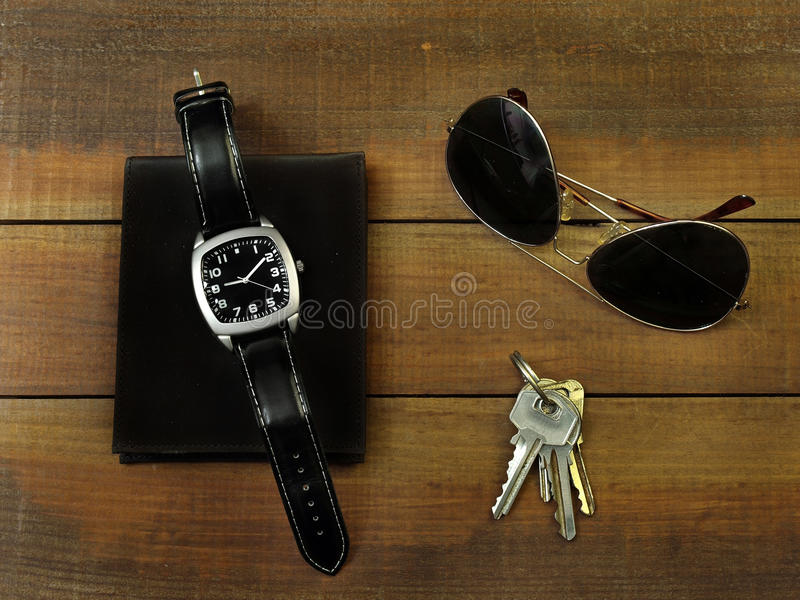I visited the Art Science Museum exhibit – Future World: Where Art Meets Science. It featured many amazing interactive exhibits exploring four sections: nature, town, park and space. ‘Crows are Chased and the Chasing Crows are destined to be Chased as well, Transcending Space’ was the first immersive interactive art piece I had been in and the visuals made it feel like I was moving along with the crows and the sound heightened the senses even more. My favourite piece of the Nature section was ‘Black Waves’, the flowing movement representing water and the tranquil sound evoked a relaxed and as well as a touching response.
The next exhibits were the town and the park. These two areas of interactive artworks made me feel like a child again playing without worries and made me curious on what every single interaction would do. I was looking around even adults were colouring in and playing hopscotch.
The Space exhibit was also beautiful with the many synchronised lights creating a canvas for users to select planets and constellations to display on the light tunnel.
After experiencing and interacting with interactive art, I have taken note to how groups of people interact with these pieces and the environment and how they could be applied to our iLight assignment. What I enjoyed most about interacting with the installation was how all of them evoked emotions and a sense of curiosity with the use of sound and touch. I would like to incorporate sound into our project to enhance the emotional response. The first thing I noticed about people interacting with the pieces was how the majority would stop and take multiple photos in interacting with the sculpture (e.g. projecting the art onto their body and sitting/holding a part of the piece), so the artwork must look visually appealing and interesting.
